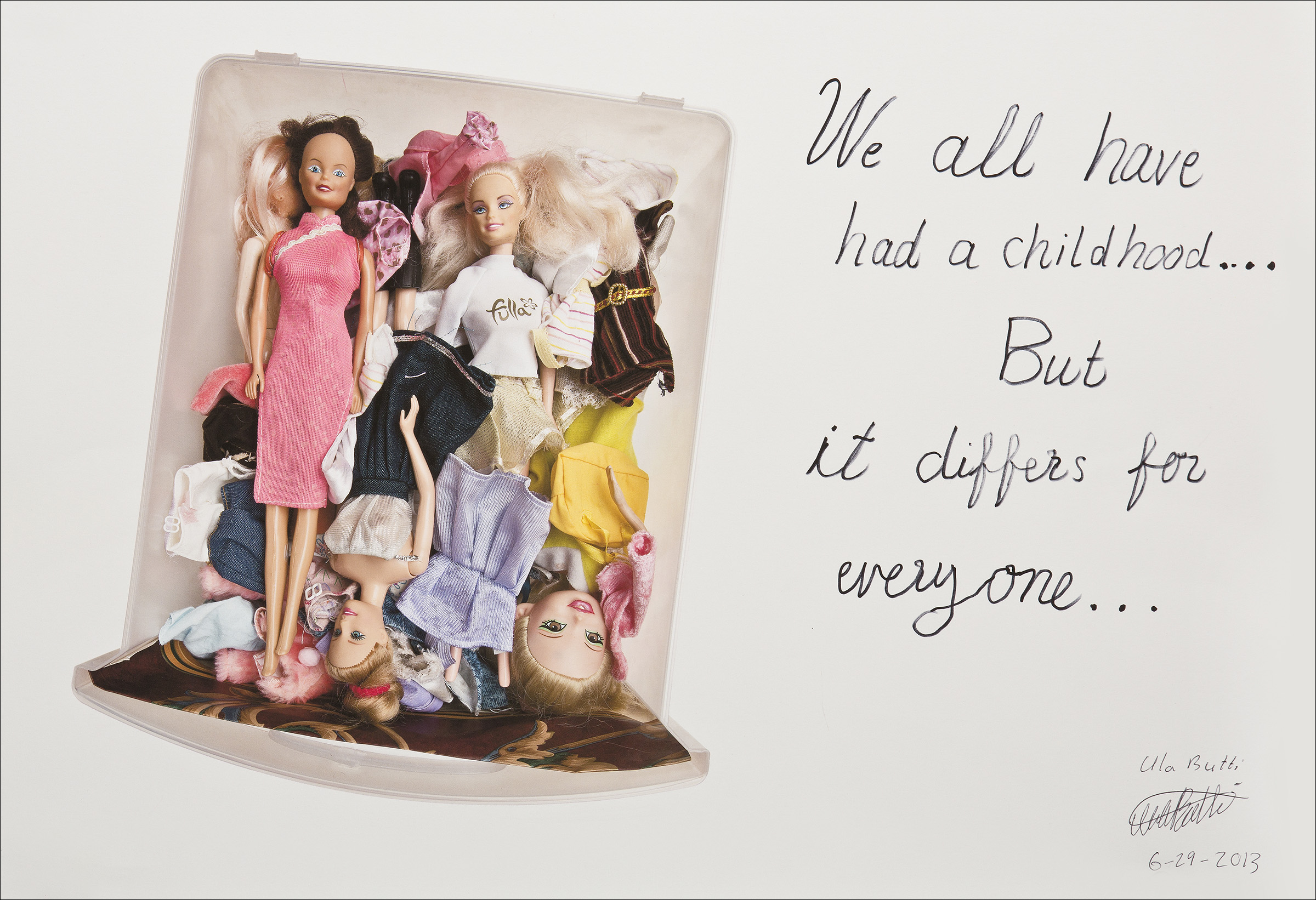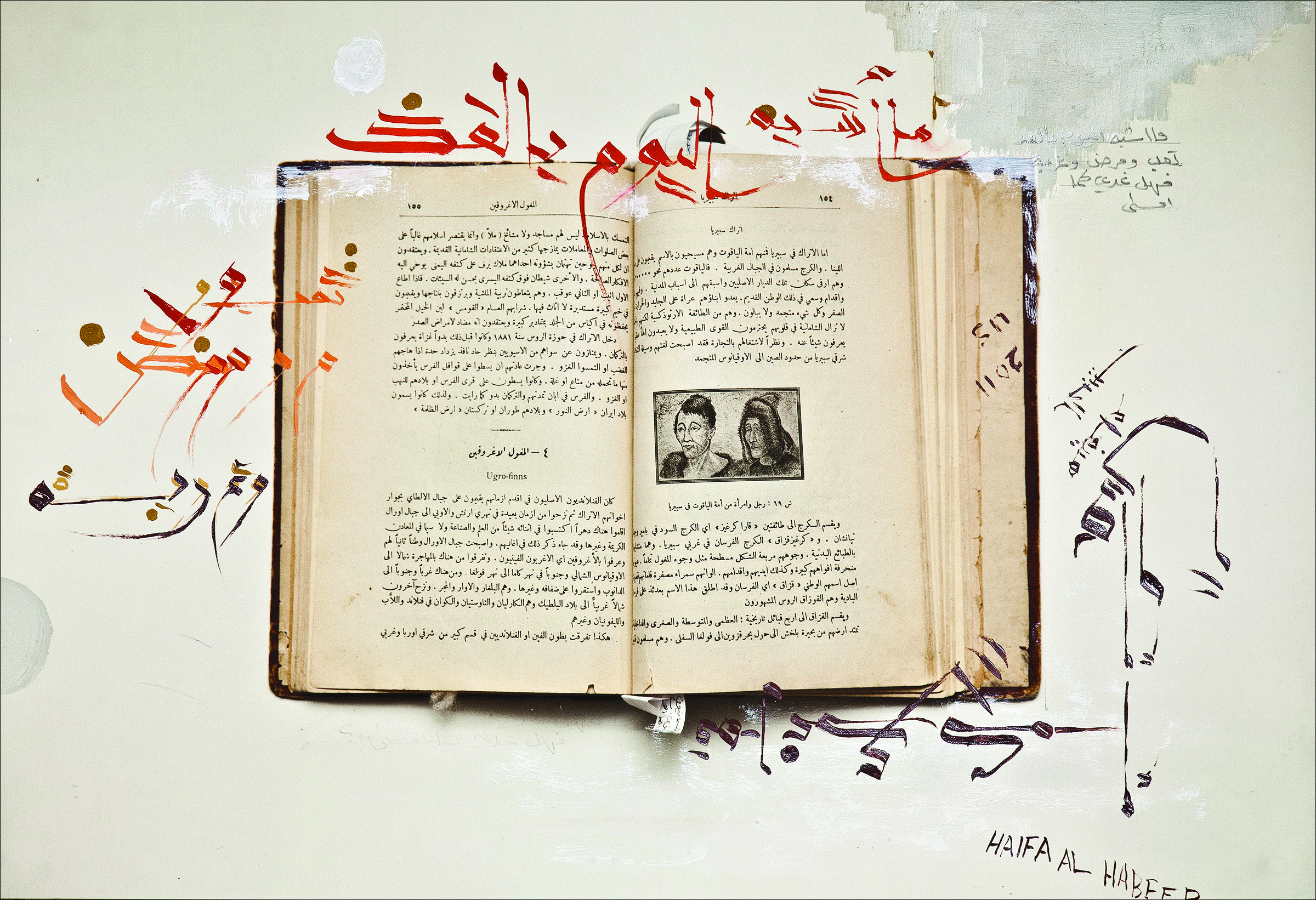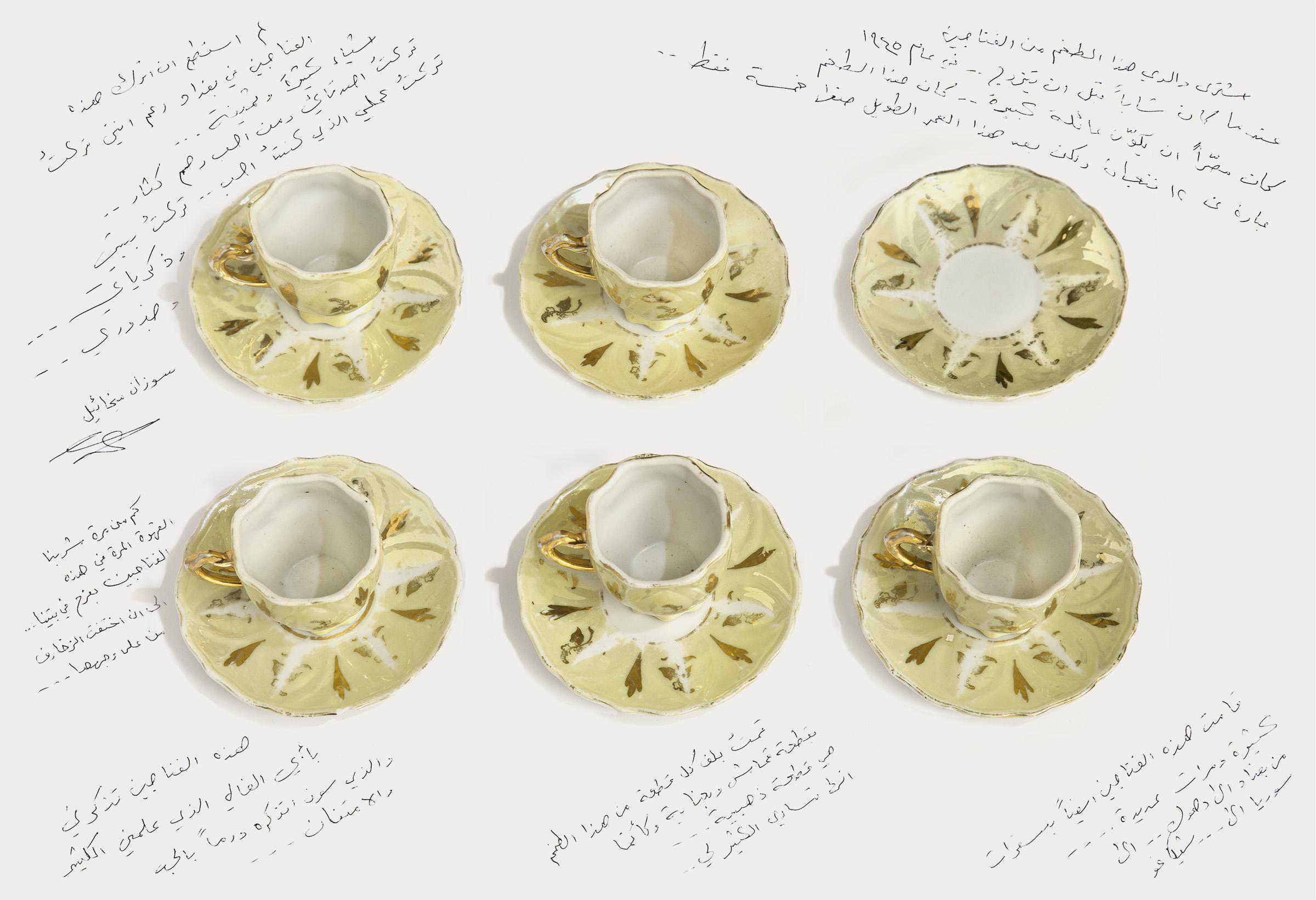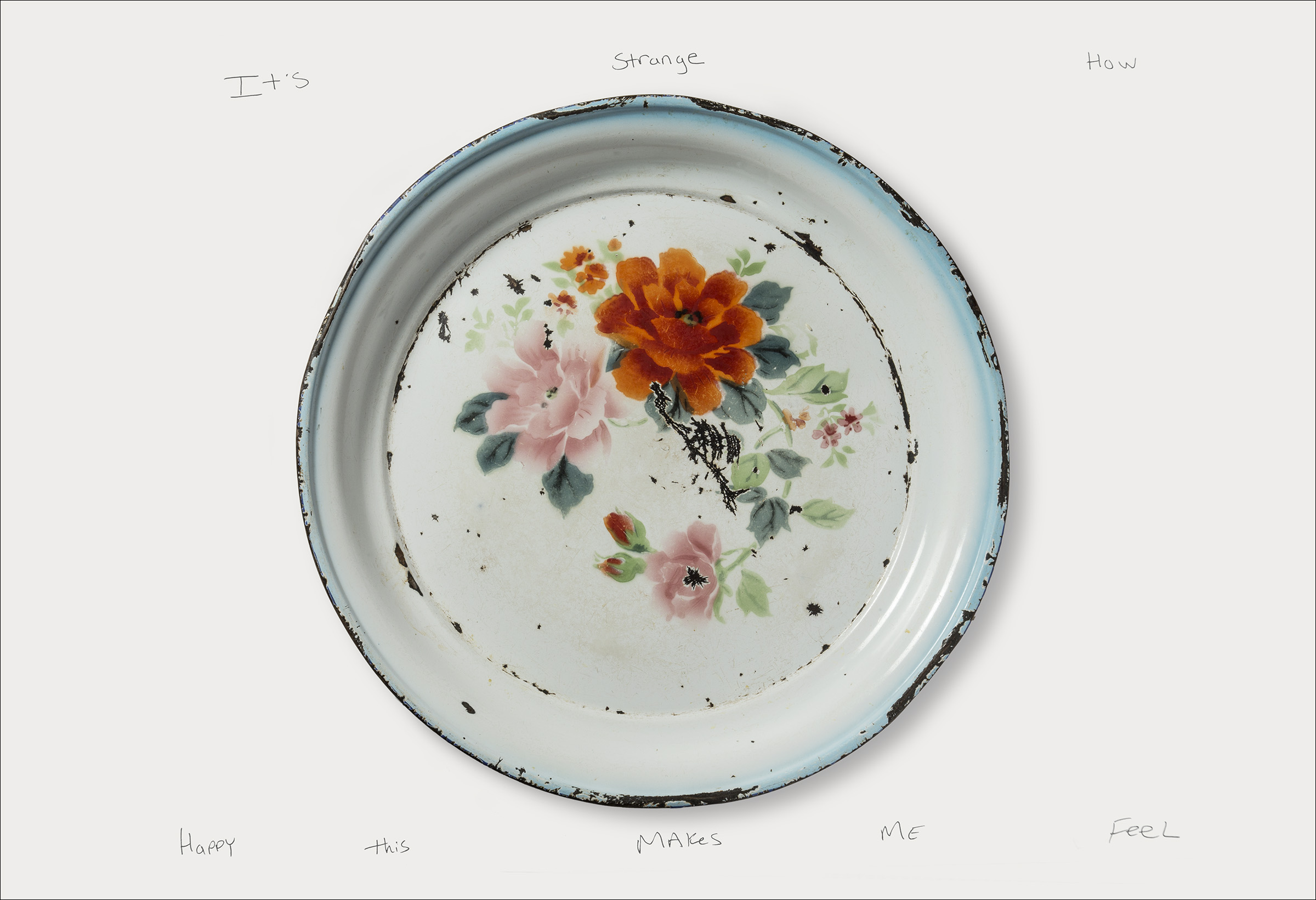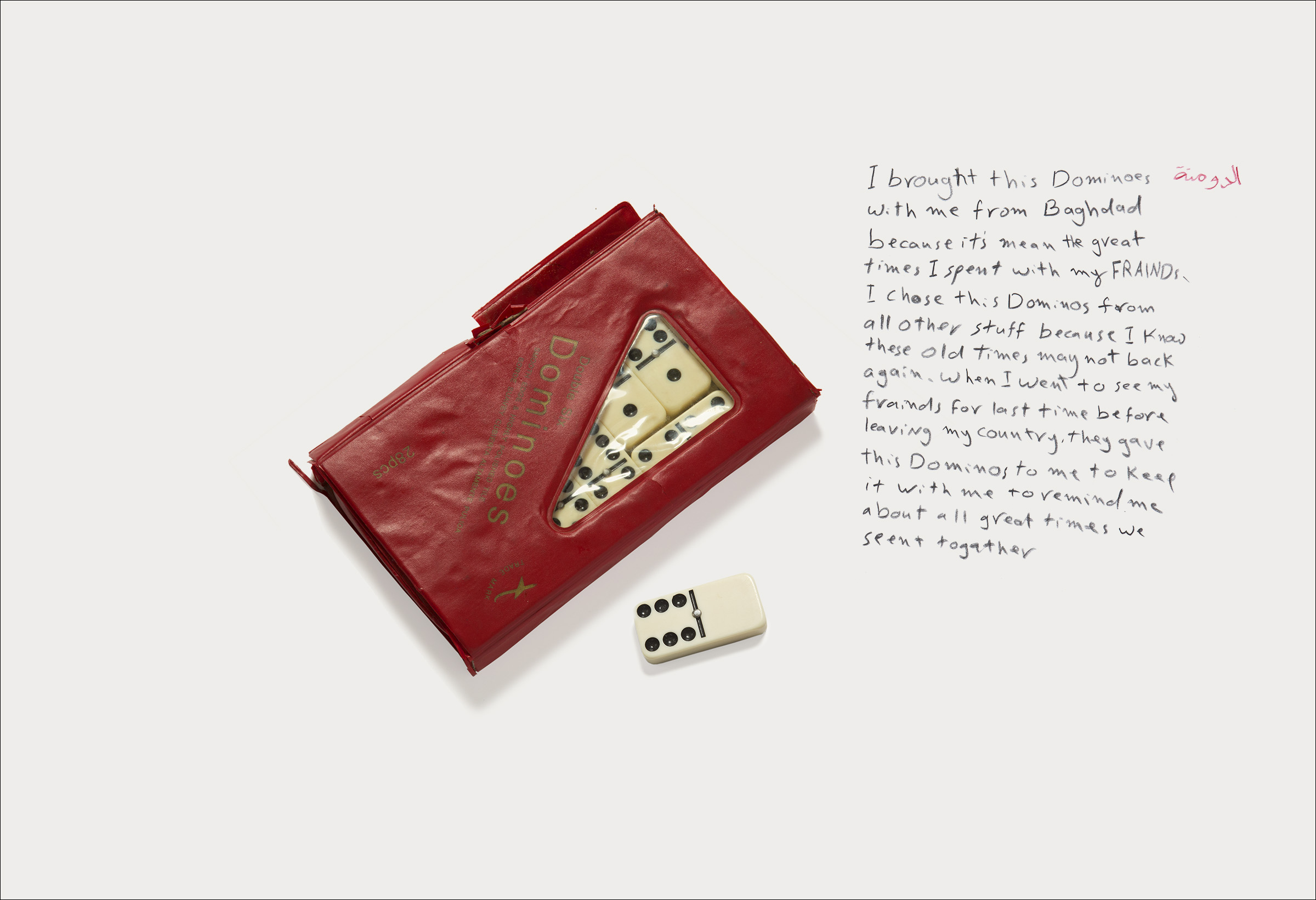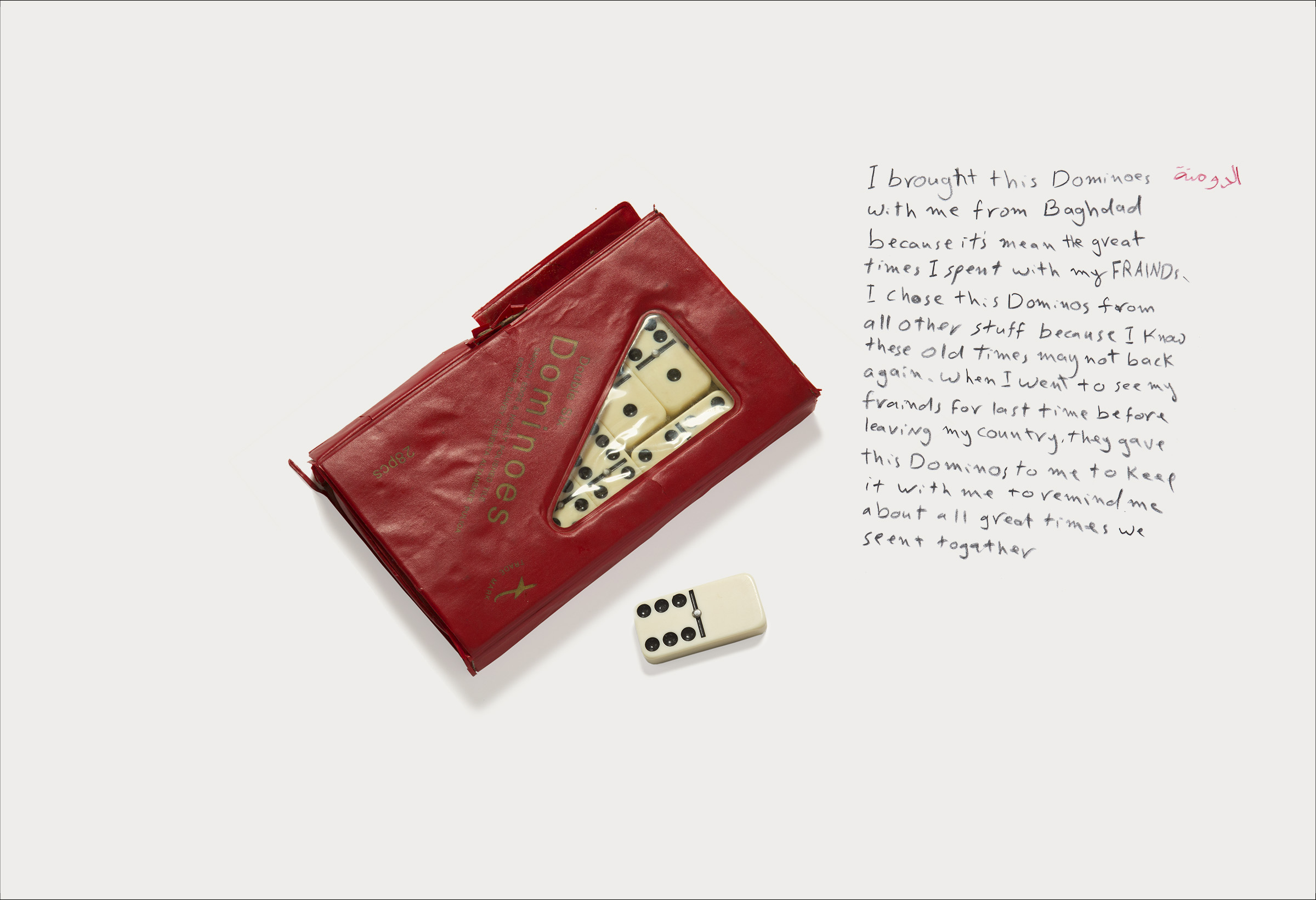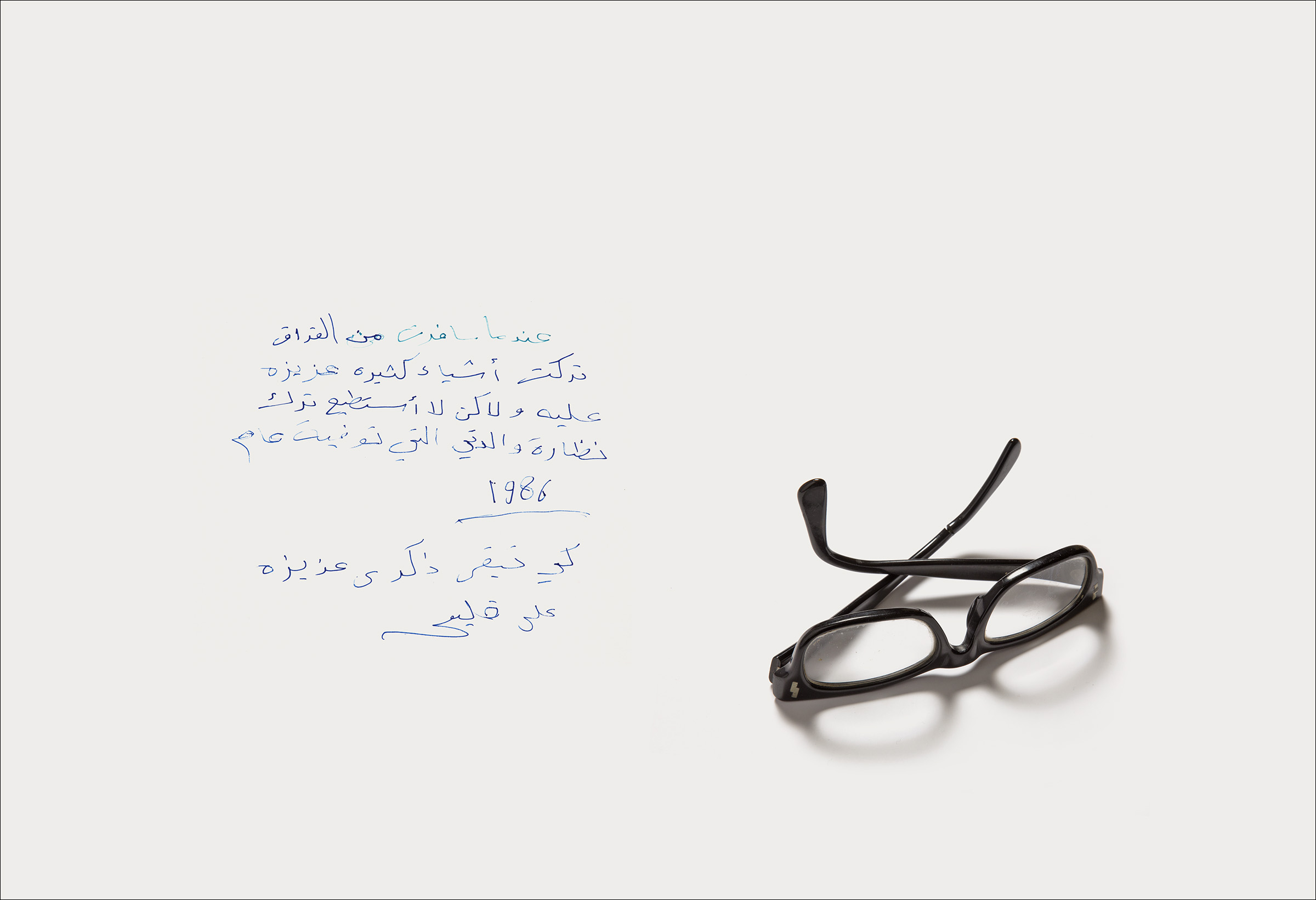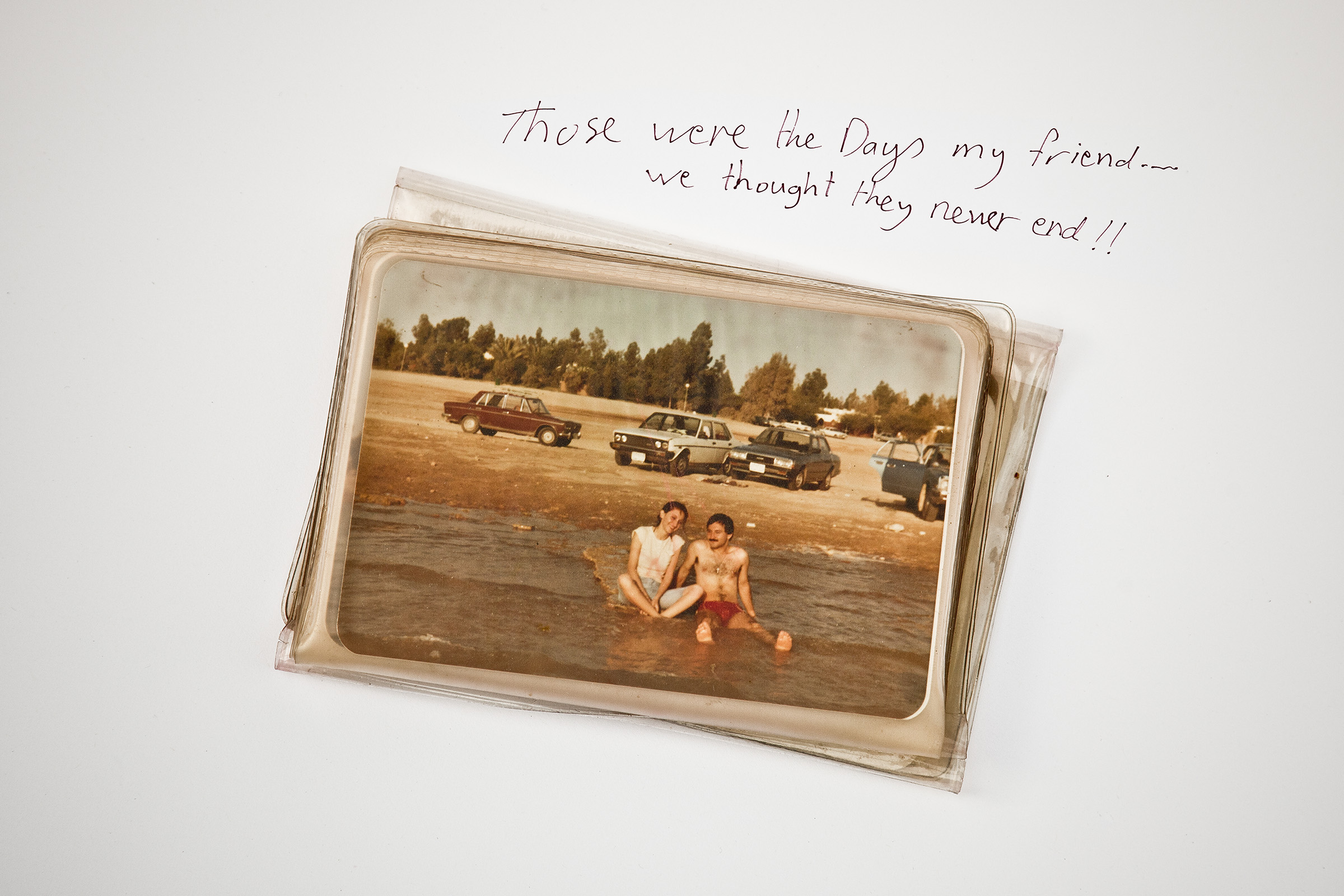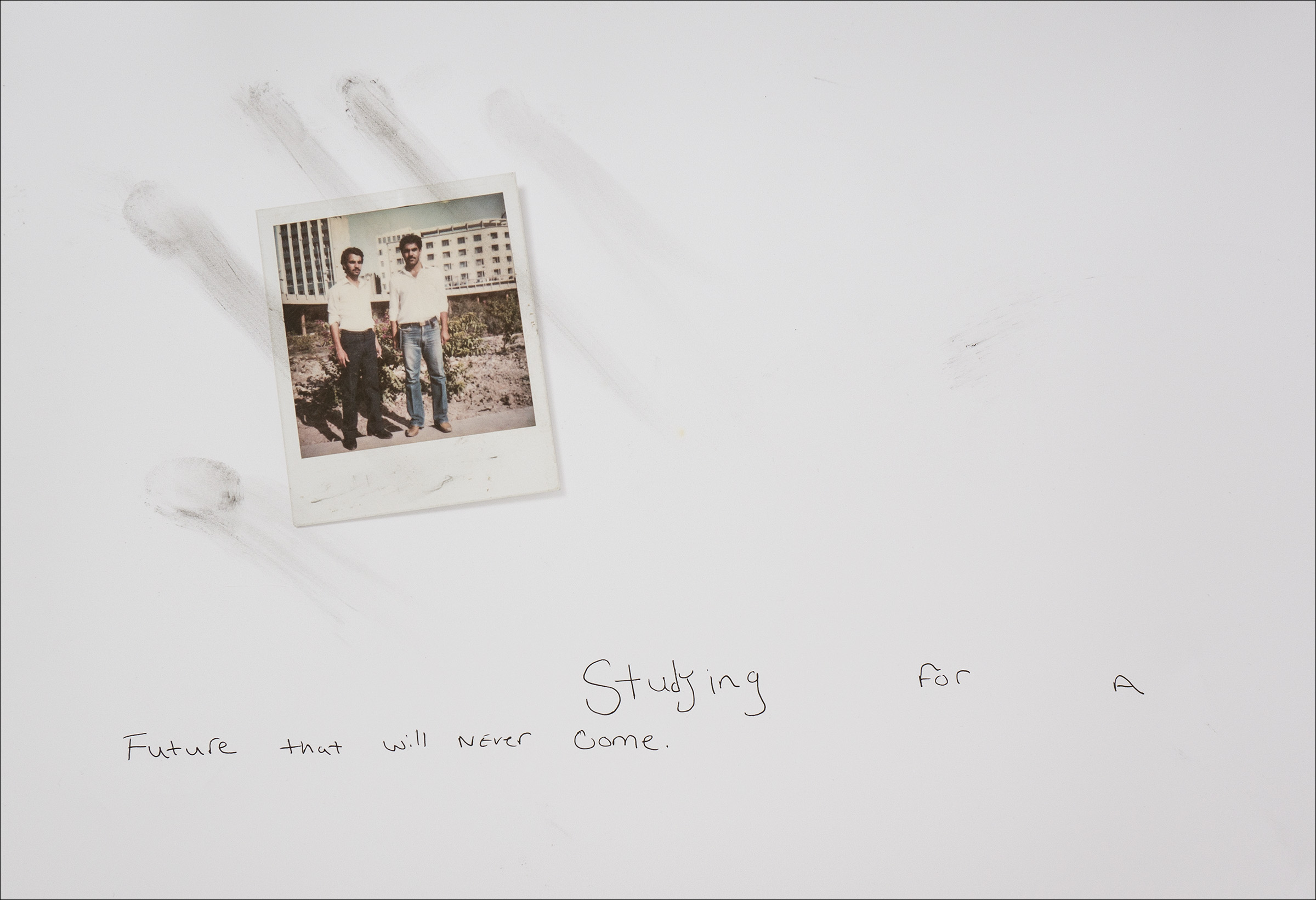Jim Lommasson
What We Carried: Fragments from the Cradle of Civilization
January 2016
What We Carried: Fragments from the Cradle of Civilization reveals the stories of refugees fleeing the Iraq War through the objects they were able to bring with them to the United States. Lommasson photographs these precious items—including family snapshots, an archaeology book, heirloom china dishes, and the Quran—on a white background, asking their owners to write directly within the open spaces left in the prints and elaborate upon each object’s significance. The resulting images are as beautiful as they are heartbreaking, providing viewers with only a small glimpse of what each person has lost while serving as a poignant reminder that, as Jim asserts, "we must take responsibility for the aftermath of the war in Iraq and Afghanistan as well as at home."
Jim Lommasson is a freelance photographer and author living in Portland, Oregon, who participated in Blue Sky’s inaugural 1975 group exhibition. This will also be Lommasson’s second solo show at the gallery. His photography has been exhibted extensively at such venues as the Portland Art Museum and Camerawork Gallery in Portland, Oregon, as well as the Arsenal Center for the Arts in Boston. His work is housed in the collections of the Portland Art Museum, the New Orleans Museum of Art, the San Francisco Museum of Modern Art, and Yale University. Lommasson received the Dorothea Lange–Paul Taylor Prize from the Center for Documentary Studies at Duke University for his first book, Shadow Boxers: Sweat, Sacrifice and The Will to Survive in American Boxing Gyms, and in 2009 Oregon State University Press published Oaks Park Pentimento: Portland’s Lost and Found Carousel Art. His most recent book, Exit Wounds: Soldiers’ Stories–Life After Iraq and Afghanistan, was published this year. Lommasson was awarded a 2011 Regional Arts and Culture Council Project Grant for What We Carried as well as a 2012—2016 Oregon Humanities Conversation Project Grant for his public discussion, “Life after War: Photography and Oral Histories of Coming Home.”

